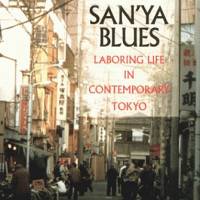Sanya, Tokyo's day-laborer quarter, hardly exists in the official geography of the city — it has been excised in an act of symbolic expulsion. Maps are designed in such a way that the area remains blotted out. The district, as "San'ya Blues" author Edward Fowler observes, "might just as well be considered a state of mind as a slum."
San'ya Blues, by Edward Fowler
288 pages
Cornell University Press, Nonfiction.
Fowler lived and worked among the area's temporary workers, and though the resulting book is a work of anthropology, his account is strictly nonacademic and very readable. Instead of a sense of futility and festering discontent, Fowler finds an obstinacy among his subjects, who often refuse help or treatment, and a restive mood in the area quite different from anywhere else in Tokyo. Through his encounters with society's outsiders — lower-caste workers, Okinawans, Ainu and Korean laborers — Fowler challenges assertions that Japan is an ethnically monolithic society.
Some might accuse him of "slumming it" for the purpose of getting a good story, but what better way to experience the hardships and occasional moments of levity than to live and work among your subjects?
New condominiums and budget hotels have appeared in the area since this book was published in 1996, but a persistent failure on the part of the authorities to address the real needs of its inhabitants has retarded meaningful development, leaving Sanya a depressed, though fiercely unique hive of humanity.
Read archived reviews of Japanese classics at jtimes.jp/essential.


















With your current subscription plan you can comment on stories. However, before writing your first comment, please create a display name in the Profile section of your subscriber account page.